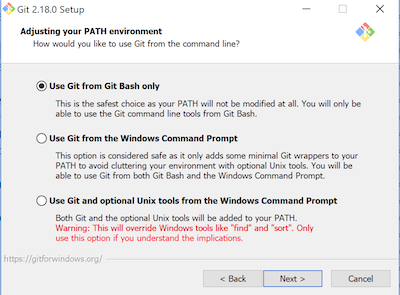1 Welcome & Install
Welcome to the Intro to Terminal guide! We hope this guide will be a resource for you to learn the basics of working with the command line.
If you’ve never opened a Terminal window before, you’re not alone. This guide is here to show you that the command line isn’t something to fear. It’s just a different way to tell your computer what to do — directly, and often much faster.
You don’t need to memorize anything right now. You don’t need to be a “tech wizard.” You just need a little curiosity.
Prerequisites
This guide covers how to use command-line interface tools that allow us to work with our computer through text commands, which is essential in programming.
On Macintosh computers, the program to use we’ll use is called Terminal and it is already installed.
Windows computers are set up a bit differently, so to work in the same environment as Mac users, we’ll need to install Git — which also includes Git Bash — before moving forward.
Windows users have to install Git and Git Bash using the following steps before moving forward with this guide.
Go to Git Downloads, and download the latest version of git.
Run the installer and follow the prompts as you normally would, choosing the defaults for everthing except when you’re asked how to use Git from the command line (see below).

git setup When you get to this page (or a similar one), select Use Git from Git Bash only.
Use the default settings for everything else.
You should now be able to find the program Git Bash from your Windows Start menu. Go ahead and launch it.
How to use this book
Before you dive in, we want to highlight a few things about how we’ve structured the guide to ensure you get the most of your learning experience.
As you work through the guide, we strongly recommend that you do the following:
- Type your commands: Getting used to writing in the command line is key to learning and remembering common commands. Though many of the code blocks in this books allow you to copy the code inside, please try to type it yourself (at least on the first try). You can always copy if you run into errors.
- Do the mini exercises: There will be small exercises throughout this guide to reinforce learning and get you more comfortable working in the Terminal. Learning to code is largely done through doing, so we highly recommend you take the time to do all of them.
- Do the chapters in order: The mini exercises and content in this book are structured to build upon each other. Your first time through, we recommend you complete each chapter along with the mini-exercises in chronological order to ensure you don’t miss steps you need later on.
- Read the terminology notes: Throughout this guide, there will be several callout boxes titled “terminology notes”. These callouts will be used to explain key terms – especially those used interchangeably – that may be confusing to new programmers. We recommend you take the time to read them because knowing the language coders use will help when reading documentation and when seeking help in online spaces like Stack Overflow.
Time to enter the Matrix, Neo.

Next up:
We’ll learn how to move around inside your computer using simple commands. Whenever you’re ready, proceed to the next chapter.